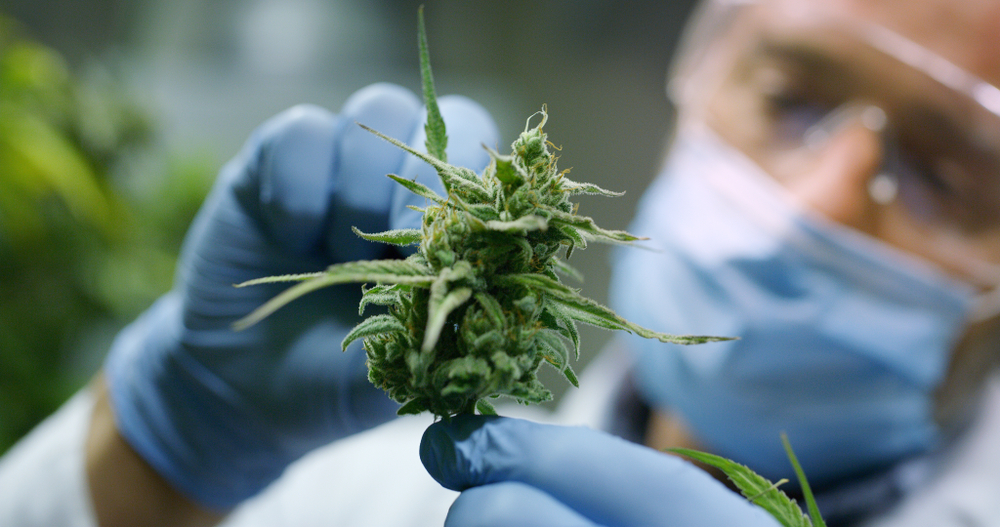One of the primary clinical indications for cannabis is in the treatment of anxiety. Several studies have demonstrated the therapeutic potential of cannabis, especially extracts that combine the phytocannabinoids CBD (cannabidiol) and THC (delta-9-tetrahydrocannabinol), in controlling anxiety disorders.
In this post, we will talk more about these substances and list the key prescriptive concepts for you to act safely and effectively in prescriptive practice in the context of anxiety disorders.
Use of phytocannabinoids in the treatment of anxiety
Assertive administration of CBD and THC can significantly reduce the manifestation of symptoms common in anxiety and stress disorders. These phytocannabinoids produce an anxiolytic effect that prolongedly minimizes the expression of defensive responses during crises.
However, because cannabis often presents a biphasic dose/response relationship, it is necessary to carefully study certain prescriptive concepts not to compromise the therapeutic effects of these medications.
A biphasic relationship means that, in the first moment, increasing the dose of the medicine increases the desired therapeutic effects.
However, there is an optimal dose that should not be exceeded; otherwise, there could be a reduction in the desired therapeutic effects or even the appearance of effects opposite to those intended.
THC, for example, in optimized doses, is a powerful anxiolytic, bringing feelings of relaxation and well-being, besides inducing sleep and appetite.
Já em doses elevadas, a substância provoca justamente o oposto: agitação psicomotora, irritabilidade, insônia e inibição do apetite. Portanto, é fundamental identificar a dose ótima do derivado canabinoide para cada paciente, tendo como balizador a melhora dos sintomas e/ou o aparecimento de potenciais efeitos adversos resultantes do uso.

Principais conceitos prescritivos da Cannabis
The overall goal of cannabis therapy is to produce symptom relief and increase the patient’s quality of life without inducing adverse effects. To maintain this balance, the following prescriptive concepts must be prioritized.
1. Screening risk profiles
Certain patients present a risk profile for cannabis use, such as adolescents, the elderly, pregnant and lactating women, those with severe and unstable cardiovascular disease, and those with severe or untreated psychiatric illnesses.
In these cases, one must be even more careful in prescribing, individualizing treatments, and titrating doses more slowly.
2. Investigate the history of the relationship with cannabis
People who use cannabis recreationally and report unpleasant experiences, such as extreme anxiety and feelings of paranoia, are more likely to be hypersensitive to THC.
In these situations, CBD-predominant formulations should be prioritized and THC-enriched products should be carefully titrated.
3. Leveling out expectations with patients
Although they represent a vast therapeutic arsenal, cannabis-based medications are not a magic solution. They are not indicated for all cases, nor do they present satisfactory responses in all patients.
Therefore, it is important to build a solid and transparent relationship with your patients to align real therapeutic goals so that the results do not frustrate the expectations of patients and their families.
4. Individualize treatments
Each individual has a unique biochemical structure and a unique endocannabinoid system. This means that there is no “cake recipe” for prescribing cannabis-based medications. It is necessary to contextualize each case to select the route of administration, the formulation profile, and the dosing strategy according to the particularities of each patient.
5. Use full-spectrum products
The use of full-spectrum products amplifies the medicinal effects of the plant. The cannabinoids, flavonoids, terpenes, and other compounds present in the plant act in synergy with each other to enhance different therapeutic effects. This effect is called the entourage effect. The literature reports that the use of herbal medicines is more effective than the use of single molecules due to its synergistic mechanism. In addition, the entourage effect modulates the potential adverse effects of these medications.
Do you want to learn more /u> about medical cannabis and prescriptive practices? Contact us and become part of the largest global study community in endocannabinoid medicine!
References
PAPAGIANNI, Eleni P.; STEVENSON, Carl W. Cannabinoid Regulation of Fear and Anxiety: an Update. Current psychiatry reports, v. 21, n. 6, p. 38, 2019.
